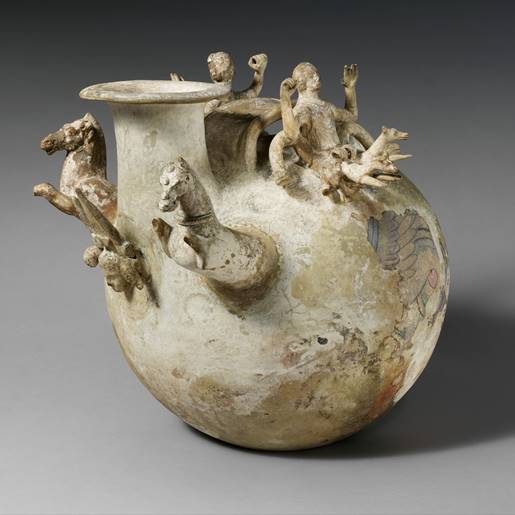
Askos
An assymetrical vessel, often squat and duck-shaped, with an off-center mouth, convex top, and single arching handle. It was originally shaped like a leather bottle (uter) for holding water, oil, or wine. Some examples have two mouths, one for filling and one for emptying, and others are quite un...
archaeologs EnglishAncient Pottery
EnglishAncient Pottery